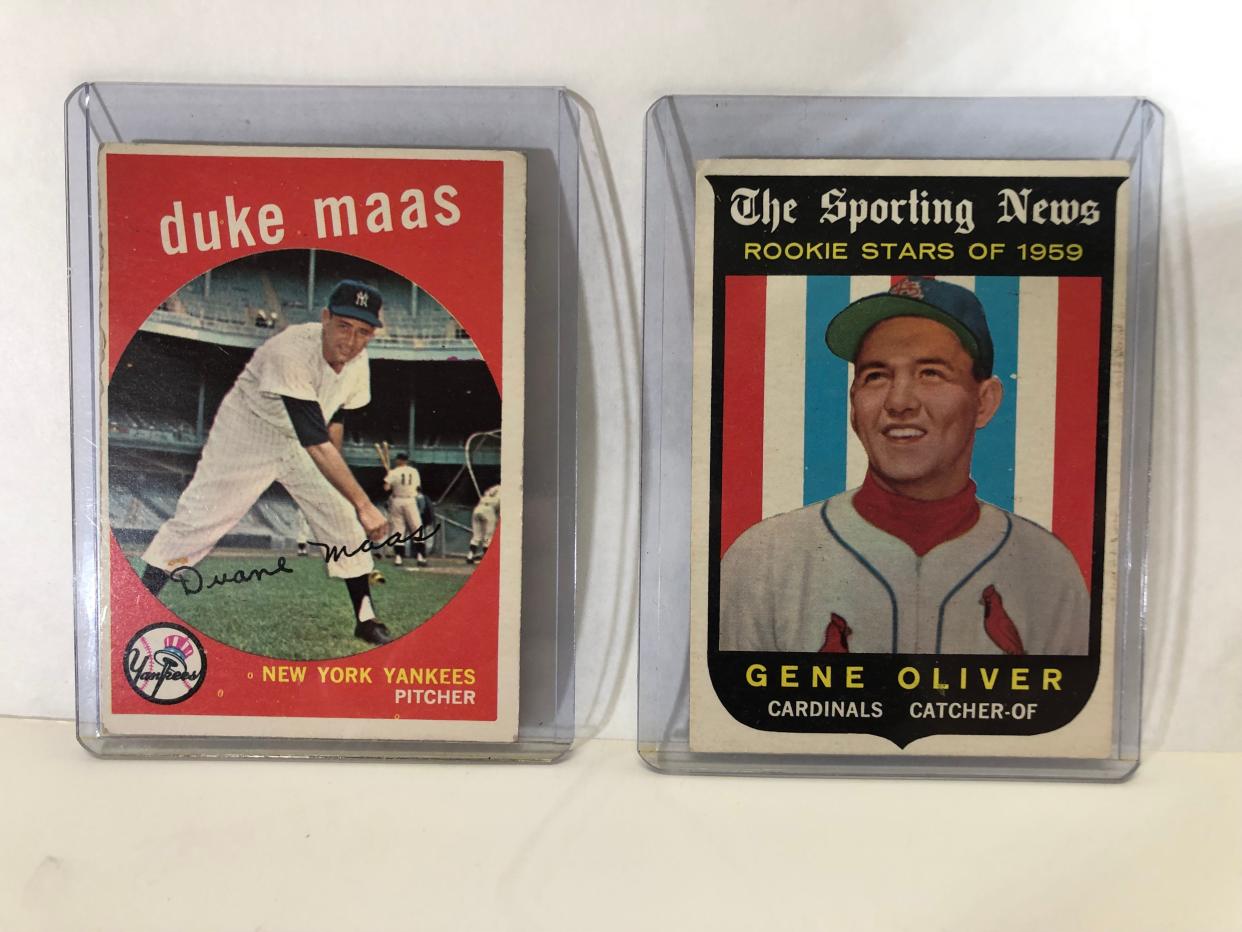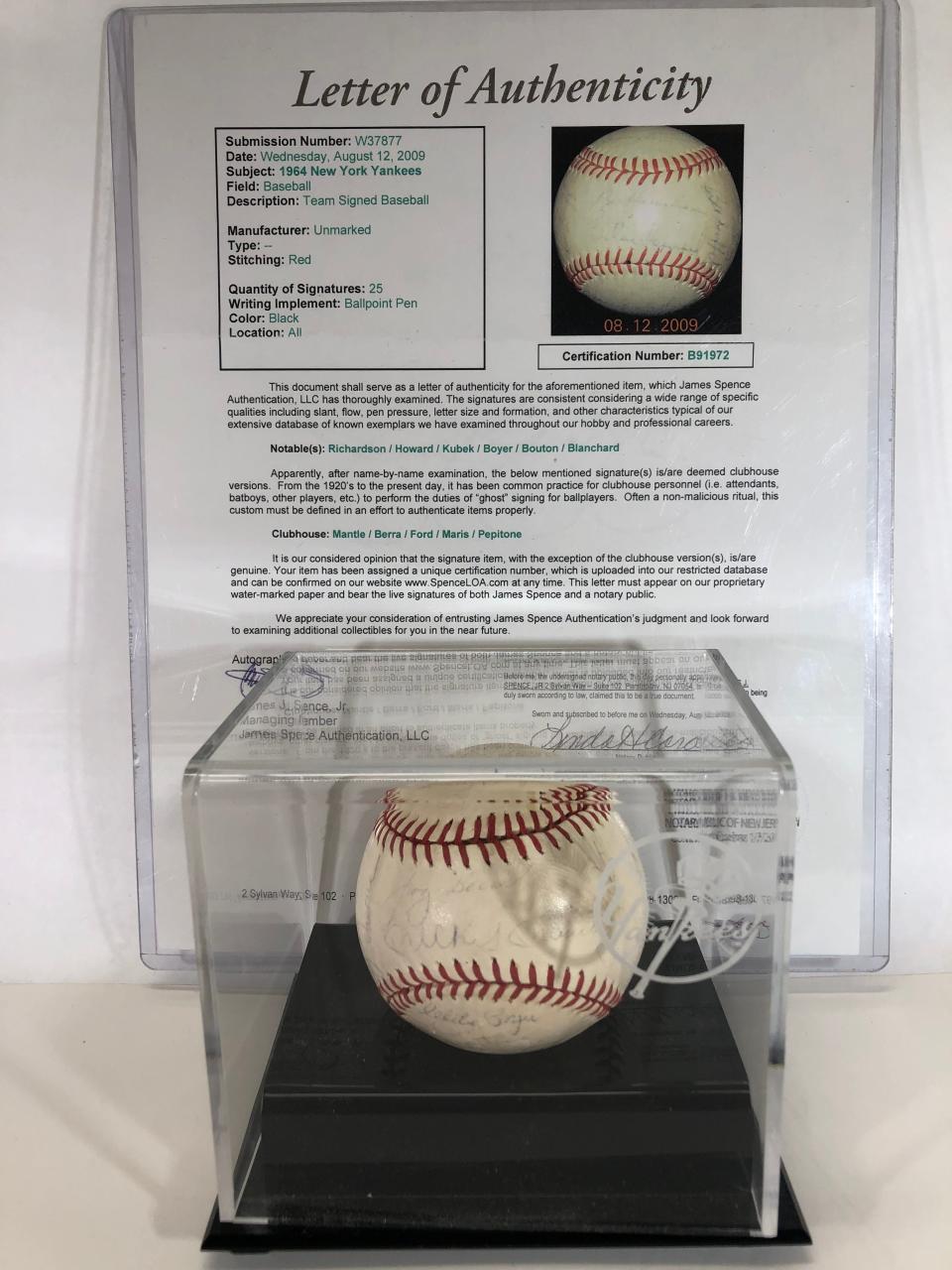Antiques: For most collectors, the ultimate question remains 'is it real... or isn't it?'

Almost all businesses have issues particular to their categories, and the antiques game is no different.
In recent years, one of the most troubling for us has been the proliferation of counterfeits and fakes. This practice has become so widespread, and the illegitimate products so good, that an entire industry has sprung forth to address it.
Autographs and trading cards are among the items most often needing authentication, but everything from artwork to purses to wristwatches are candidates as well. A subsidiary business is the grading of coins, a process that takes the guesswork — or at least most of it — out of an often subjective opinion of a coin's condition. Let's walk through how this works.
Among the largest authenticating firms is one called Professional Sports Authenticator (PSA). Beckett is another one, and JSA a third. PSA claims to have authenticated more than 35 million autographs and artifacts, and their imprimatur is regarded as the industry's gold standard. Once you've submitted an autograph for authentication, PSA undertakes several steps to determine if you've got the real thing. Ink and paper analysis are part of the process, and PSA will compare your signature with many others which they know to be authentic.
In some cases, a video spectral comparator will be brought into play, a high-tech device that provides technical data on the make-up of the ink. All of these steps can be beaten, but PSA and other top firms recognize that their reputation for accuracy is their one and only asset. Thus, they are understandably careful in their assessments and won't hesitate to issue a negative opinion if they are unsure.

Once an autograph is deemed to be real, a sticker with a unique alpha-numeric sequence is affixed to the item, and the same sequence is noted on a related certificate of authenticity that accompanies the item back to its owner. In the interests of transparency, PSA publishes these numbers for all to see, allowing for some peace of mind for buyers who might be looking to acquire an autograph with no known provenance.
So important has this process become in the buying and selling of autographs that a Mickey Mantle baseball with an authenticated signature might sell for upwards of $1,000 while a virtually identical autographed ball without such a number will struggle to attract buyers at any price.
If this seems like a lot of unnecessary trouble and expense — authentications sometimes can take weeks or months and cost hundreds of dollars — you don't know just how costly original autographs can be. Several George Washington autographs on his personal copies of the Constitution and Bill of Rights recently sold for $9.8 million, while a signed copy of Lincoln's Emancipation Proclamation brought $3.7 million. Admittedly, those are historic documents, but even autographs of contemporary figures can bring a lot of money.
Authenticated Neil Armstrong signatures often sell for upwards of $7,500 while those belonging to Bob Dylan, Madonna, and Pele are typically in the low four figures. Earlier this year, an unusually clean and verified Babe Ruth autographed baseball brought more than $388,000. It's not hard to see why counterfeiting has become so widespread.
As for coin grading, there are four (4) firms that eBay deems reliable enough to cite in its listings: ANACS, ICG, NCG, and PCGS. All are easily found online. Coins submitted for grading are carefully examined for authenticity and wear. Those that have been polished to a new-like shininess are easily detected due to micro-wear, and an absence of the original mint luster, so don't think you are enhancing your coin's value by doing so.
After examination, coins are graded on a 70 point scale, with one being the worst and 70 reflecting a near-perfect state. Coins are then "slabbed" in a protective case that cannot be opened without fracturing the case, and thus invalidating the grade. Coins so graded are then easily priced based on recent sales of like items.
In short, there is considerable value in authenticating and grading your treasures, but I have to say, there's still something to be said for holding a small piece of history in your hands.
Mike Rivkin and his wife, Linda, are longtime residents of Rancho Mirage. For many years, he was an award-winning catalogue publisher and has authored seven books, along with countless articles. Now, he's the owner of Antique Galleries of Palm Springs. His antiques column appears Sundays in The Desert Sun. Want to send Mike a question about antiques? Drop him a line at info@silverfishpress.com
This article originally appeared on Palm Springs Desert Sun: Antiques: Authenticity remains a key question for most collectors

